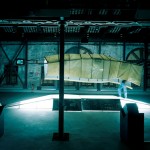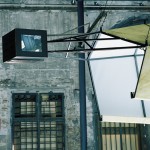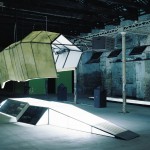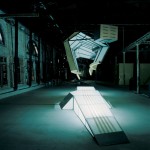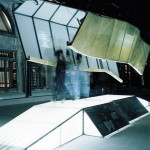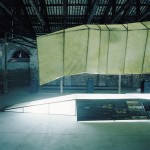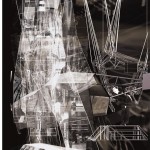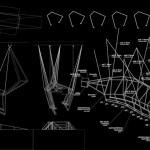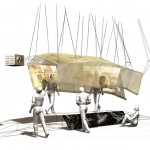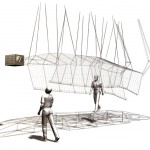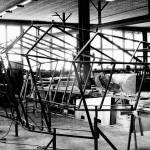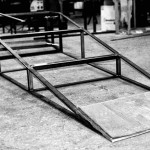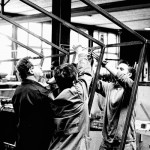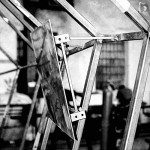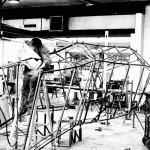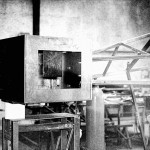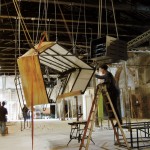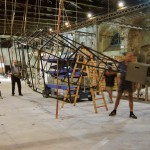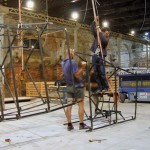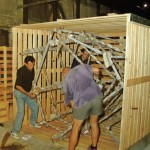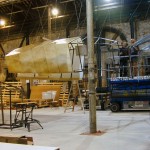The conception of our installation for the exhibition of the 7th International Architecture Exhibition 2000, La Biennale in Venice, with the working title of Less Aesthetics More Ethics”, is a symbolic manifesto addressing new methods of operation in architecture.
Ortlos translates as ‘without space or space off’. It considers work as not dependent on a certain place, but rather in networks, or anywhere where there is connectivity to the web. New working worlds and structures are emerging through this condition. Consequently, the whole process has a strong effect on the actual projects.
The object consists of two separate parts, each referring to the 2nd and the 3rd dimension. The projects’ boards, representative of classic architectural drawings, are fortified at the side of the lengthwise oriented gangway. The design steps for the respective project are shown. The upper part, a floating, suspended, cloud-like construction consists of 3 video projectors displaying 3d-computer animations – the simulations of the visions and ideas for an advanced city by the project’s “City at Once” and “The library of the information age”.
It is a form-tube-construction covered with a projection foil which shapes the new frame and defines the space in a space. From the outside the shadows of the viewers and the projections can be seen as a blurry image on the skin. The movement of the visitors through the ‘tunnel’ is filmed with a video camera and displayed on an external monitor in real time. These images are also broadcast on the Internet. The superimposition of information and movement enables the installation to be experienced in four different ways.
The two main topics of ortlos are experimental architecture and interface design in urban surroundings. Through the project’s “Library for the Information Age”, “City at Once”, and this installation, we want to raise connections between media-theory and architecture for discussion. This is about the information society in which we live and the virtuality in which we trust, with the aim to simulate and check the real worlds that we are experiencing.
The initial steps in this direction move toward advanced communication and information exchange between users and developers, combined with process-intent generation of complex parametric systems that expand the boundaries of conventional infrastructures. The departure point should be first a simple understanding of the environments that influence our way of life.
[pro-player width=”425″ height=”344″]http://www.youtube.com/watch?v=xJqlKX9GmNc[/pro-player]
